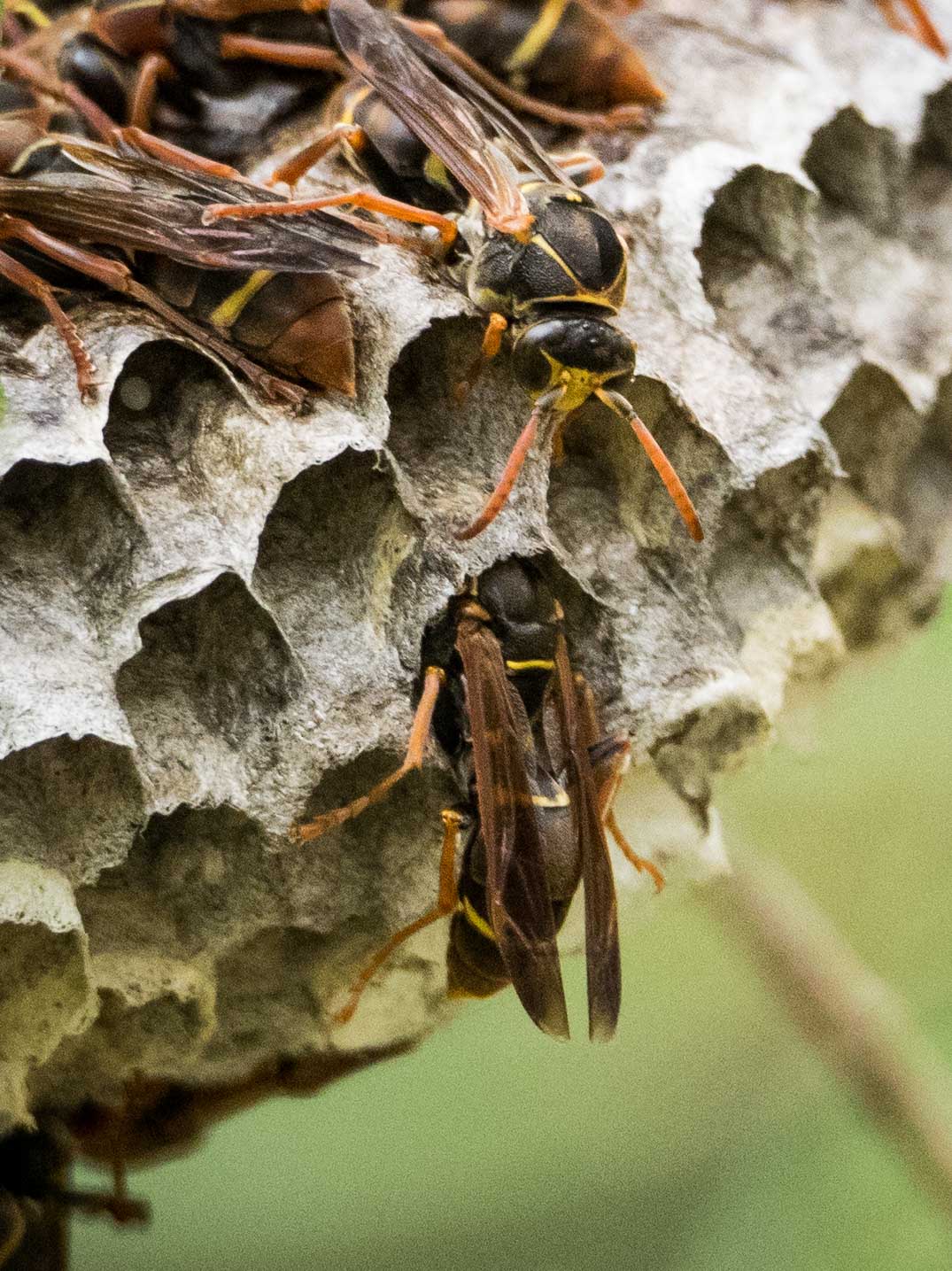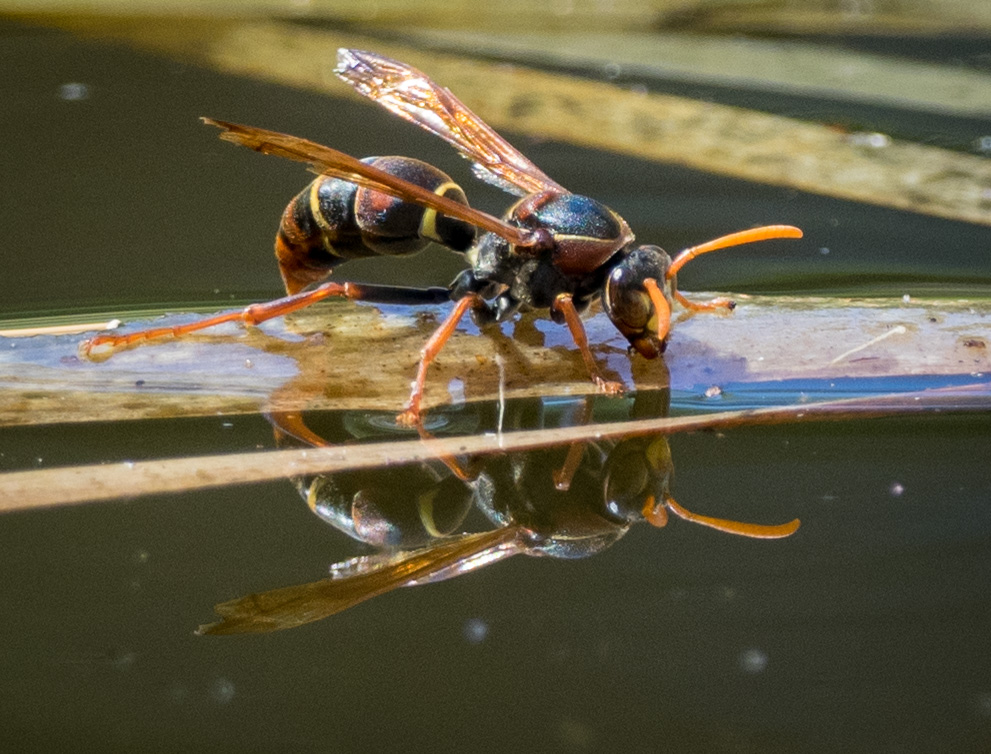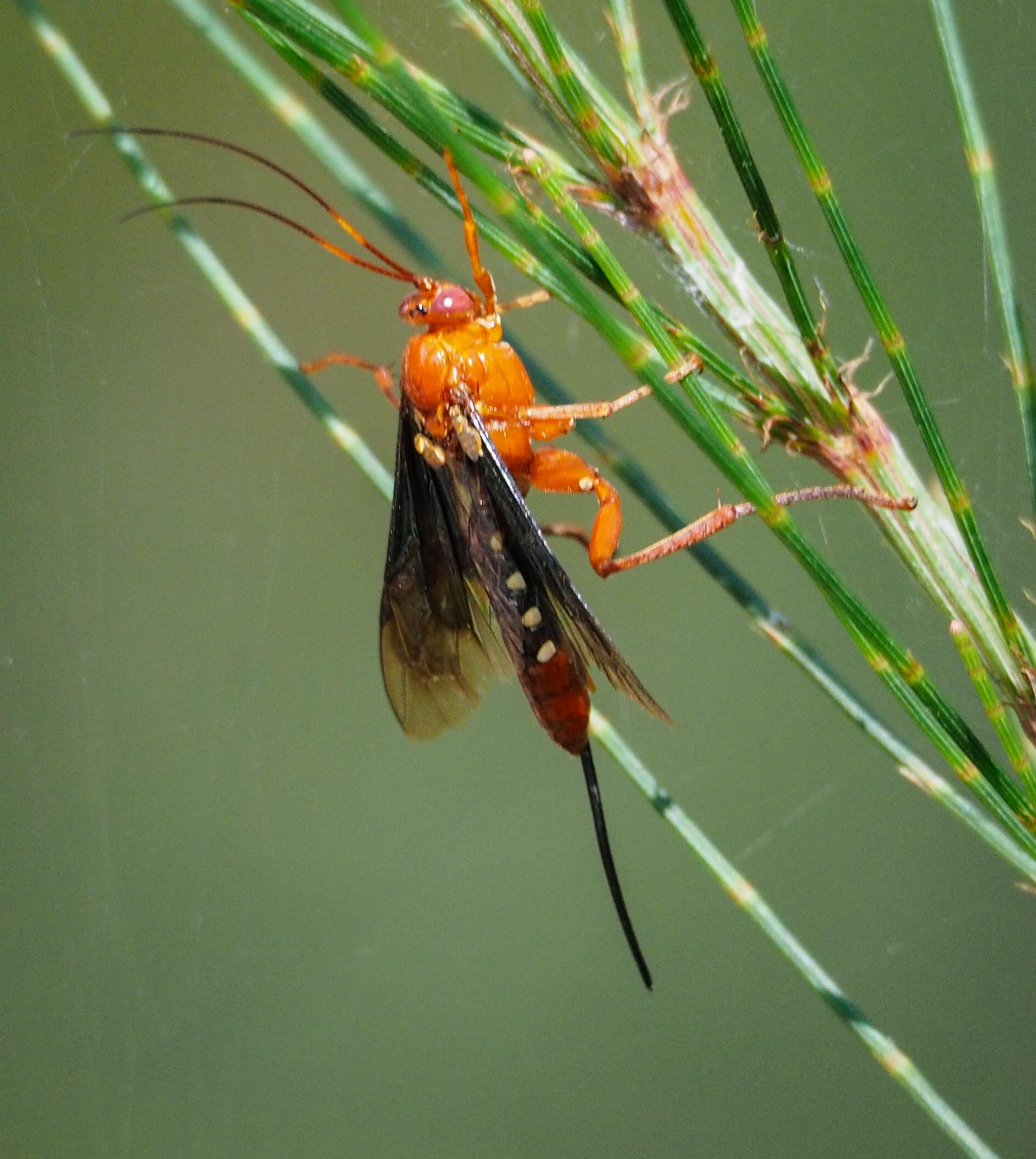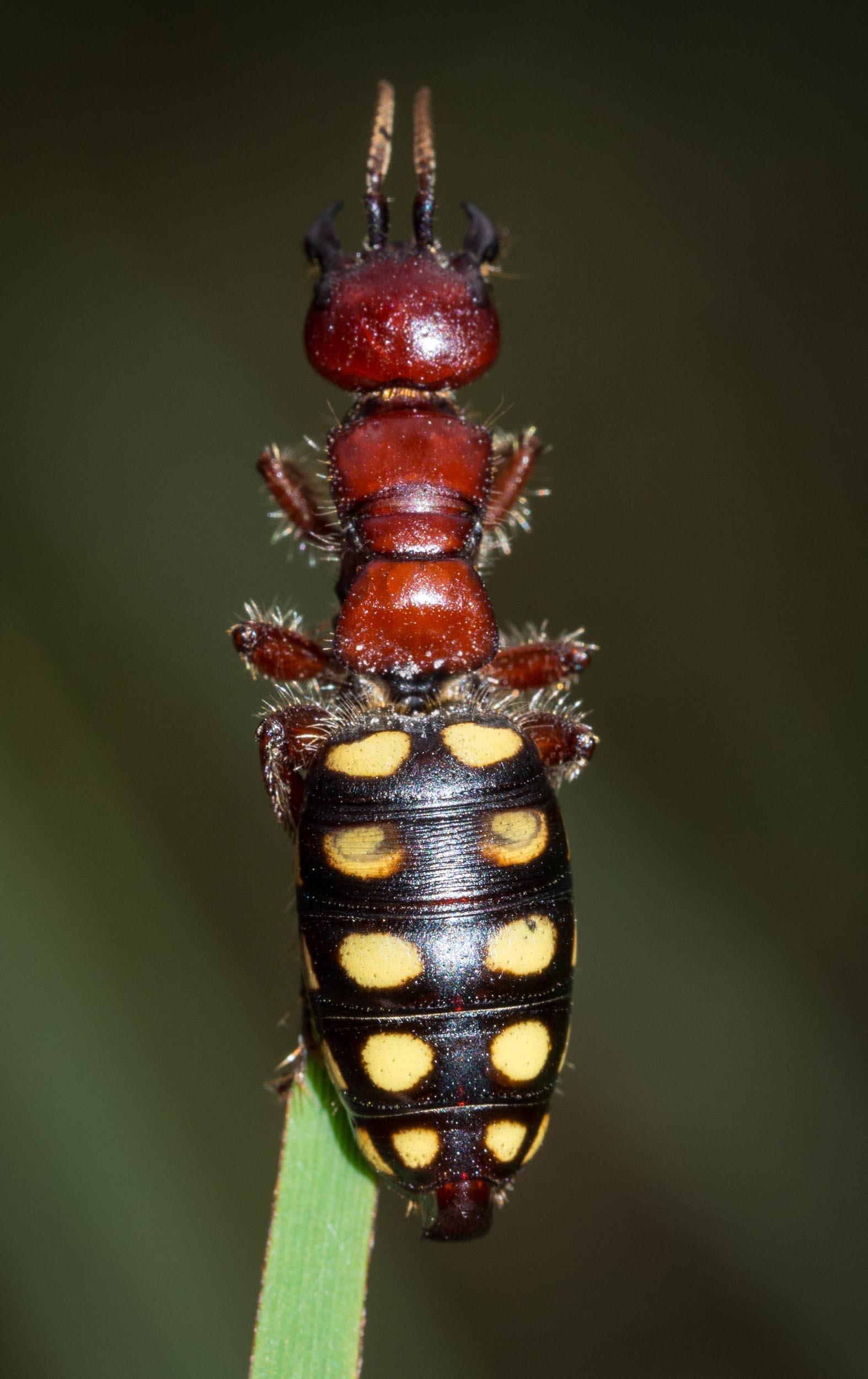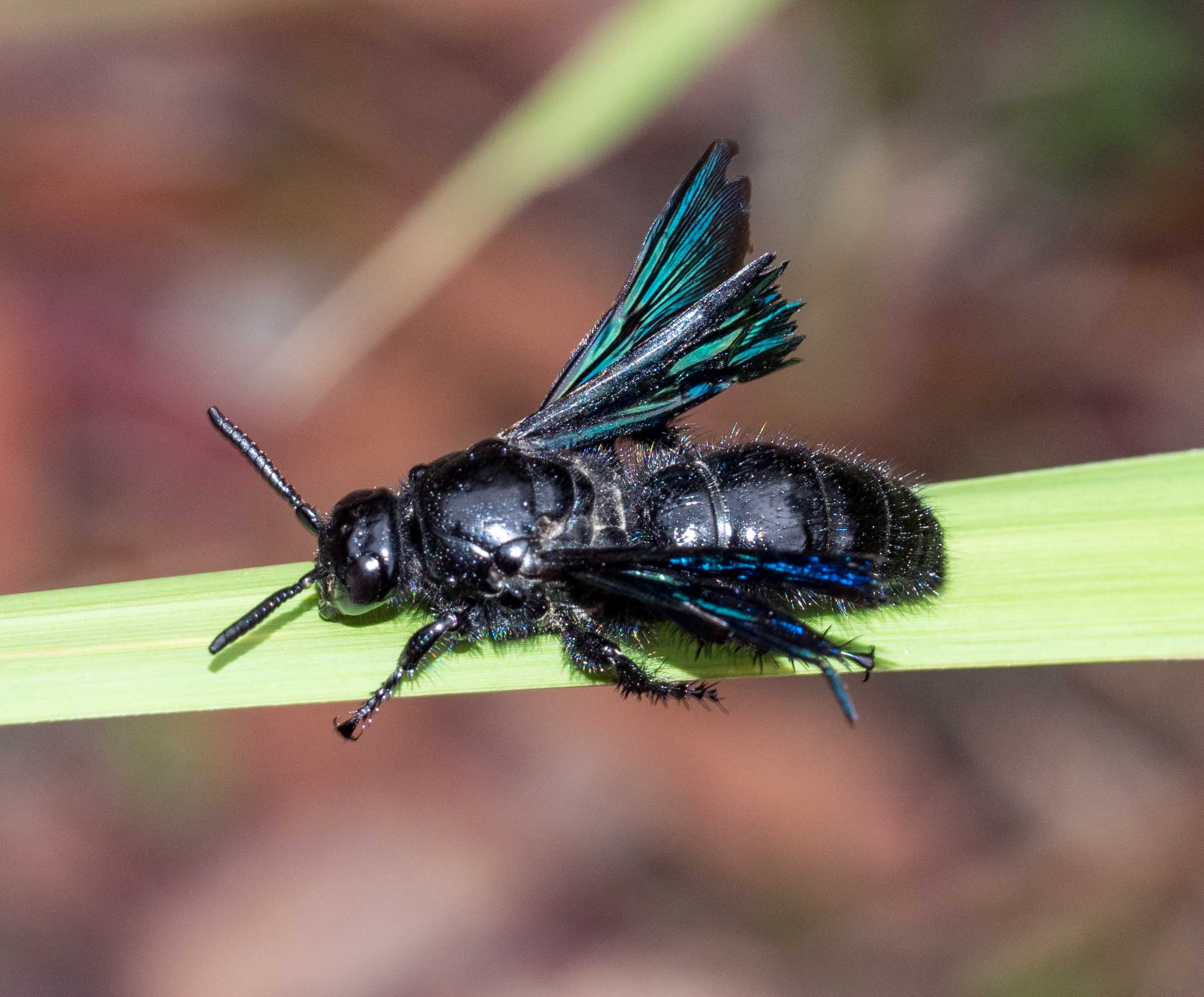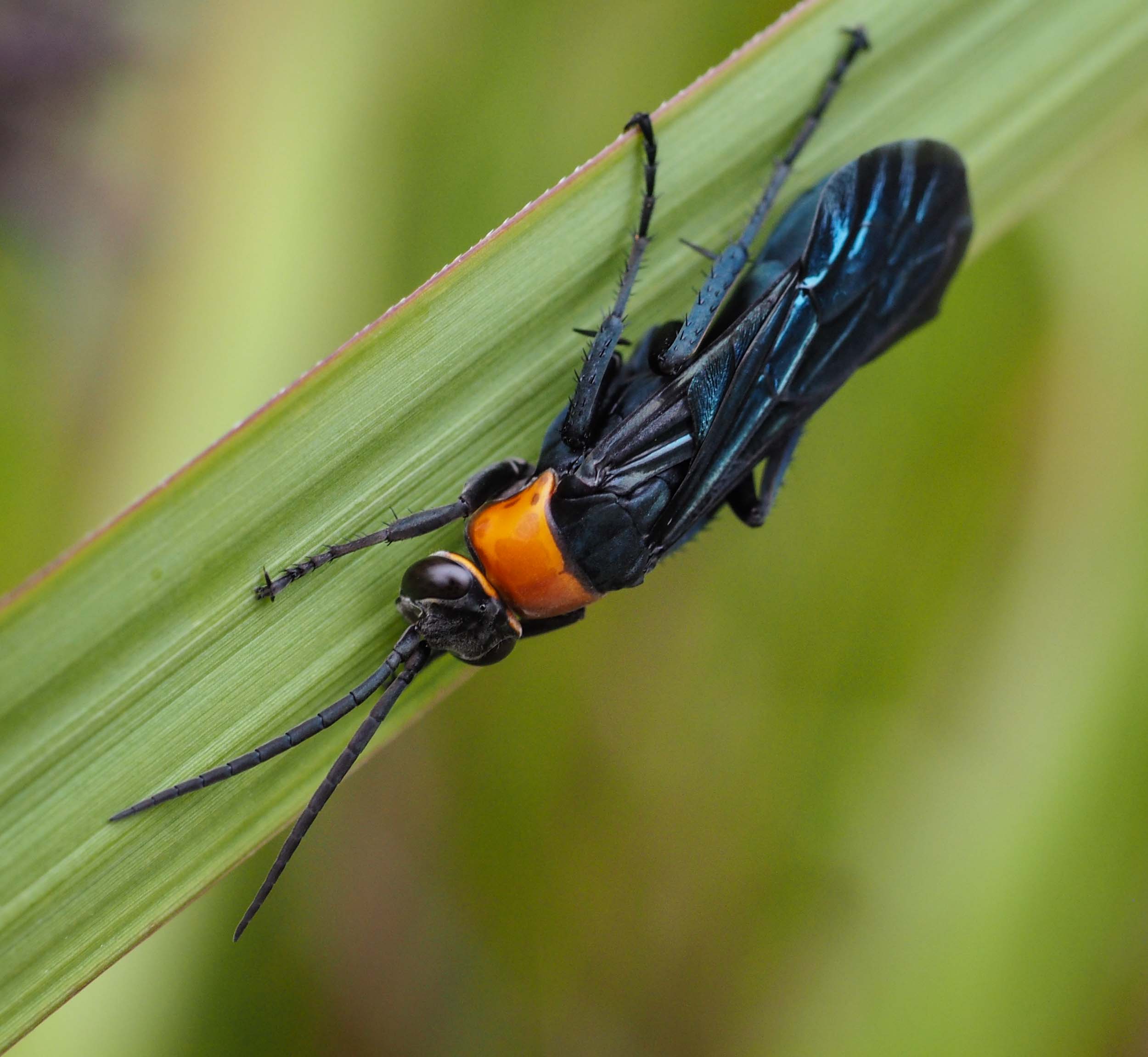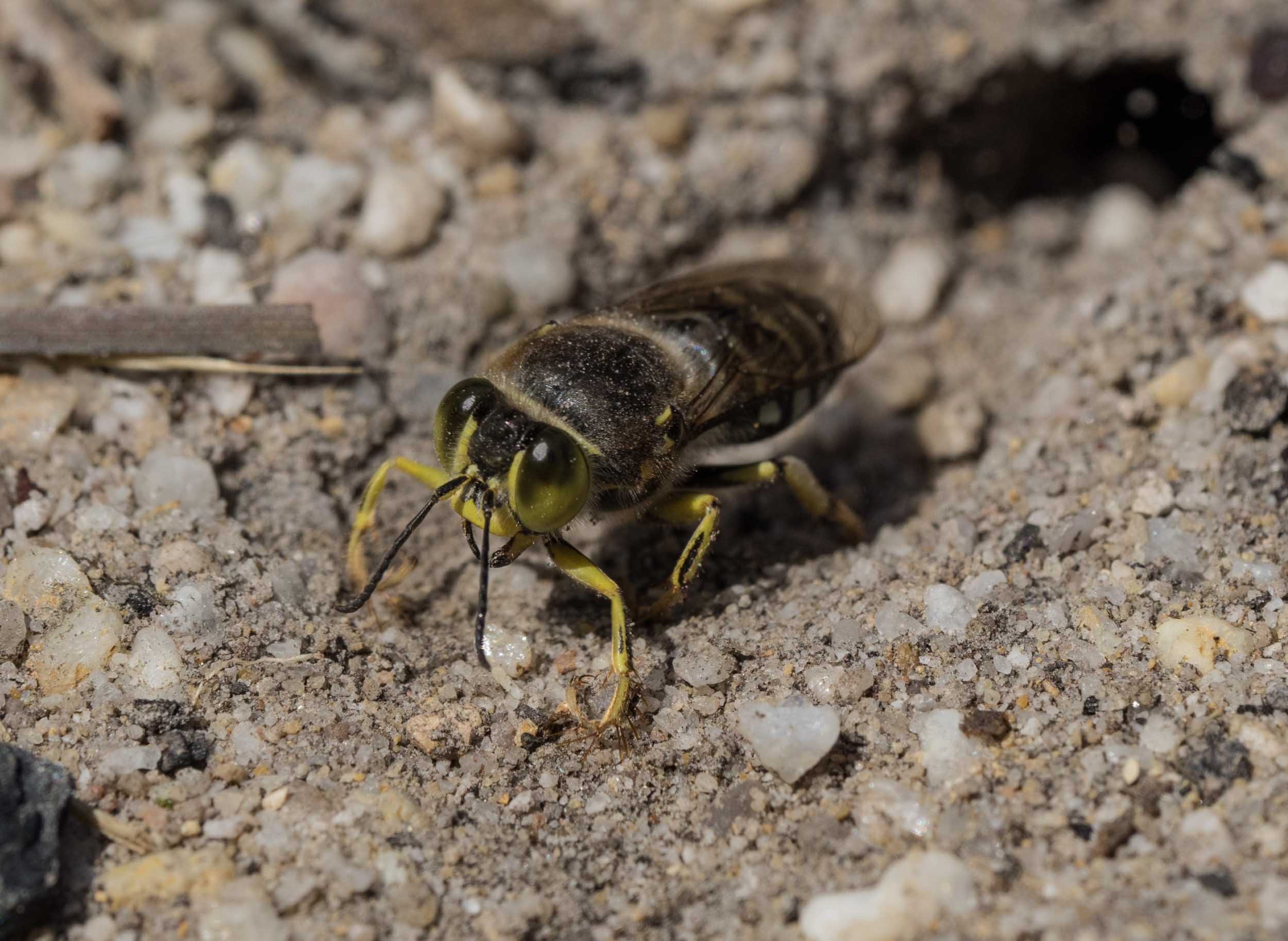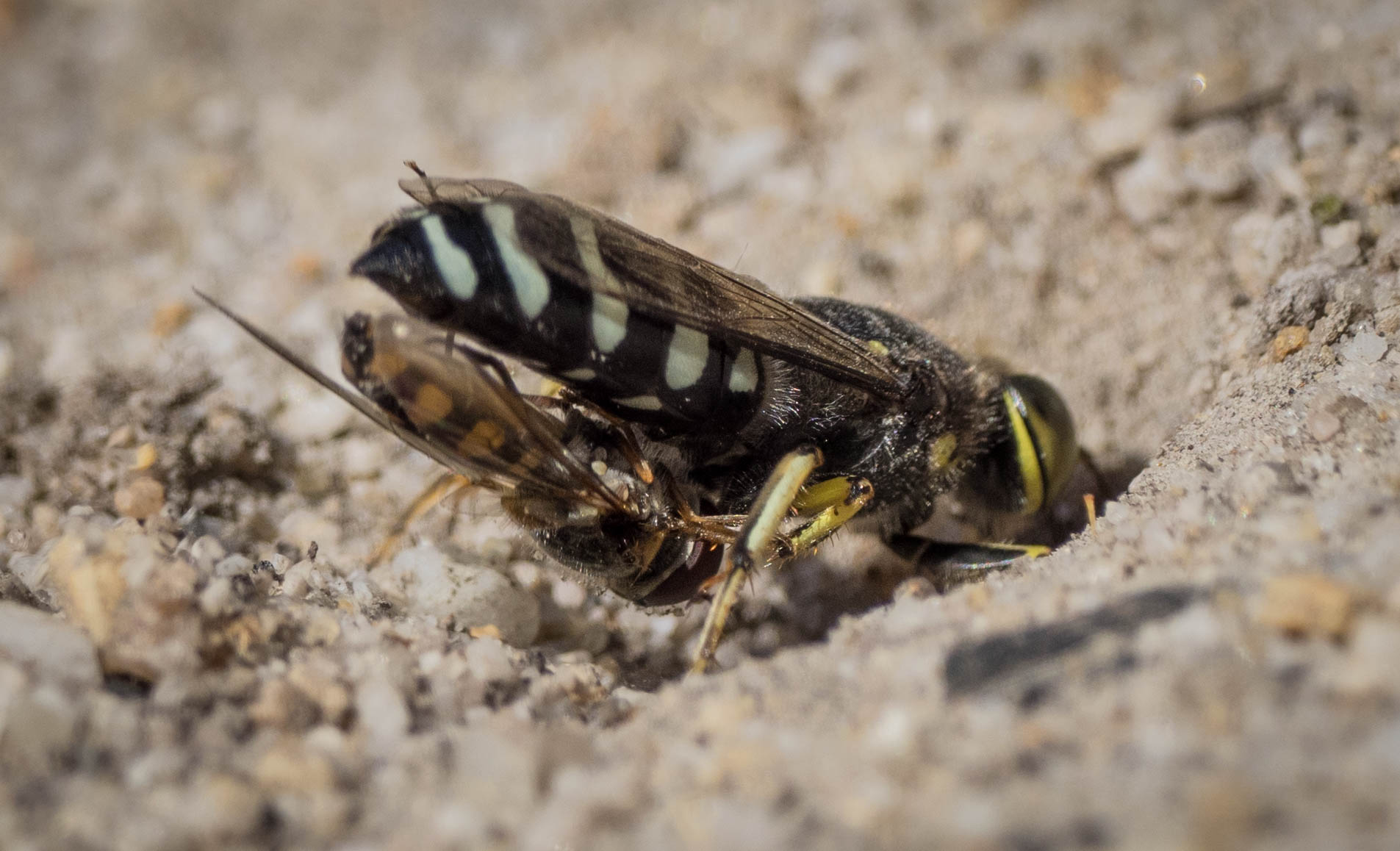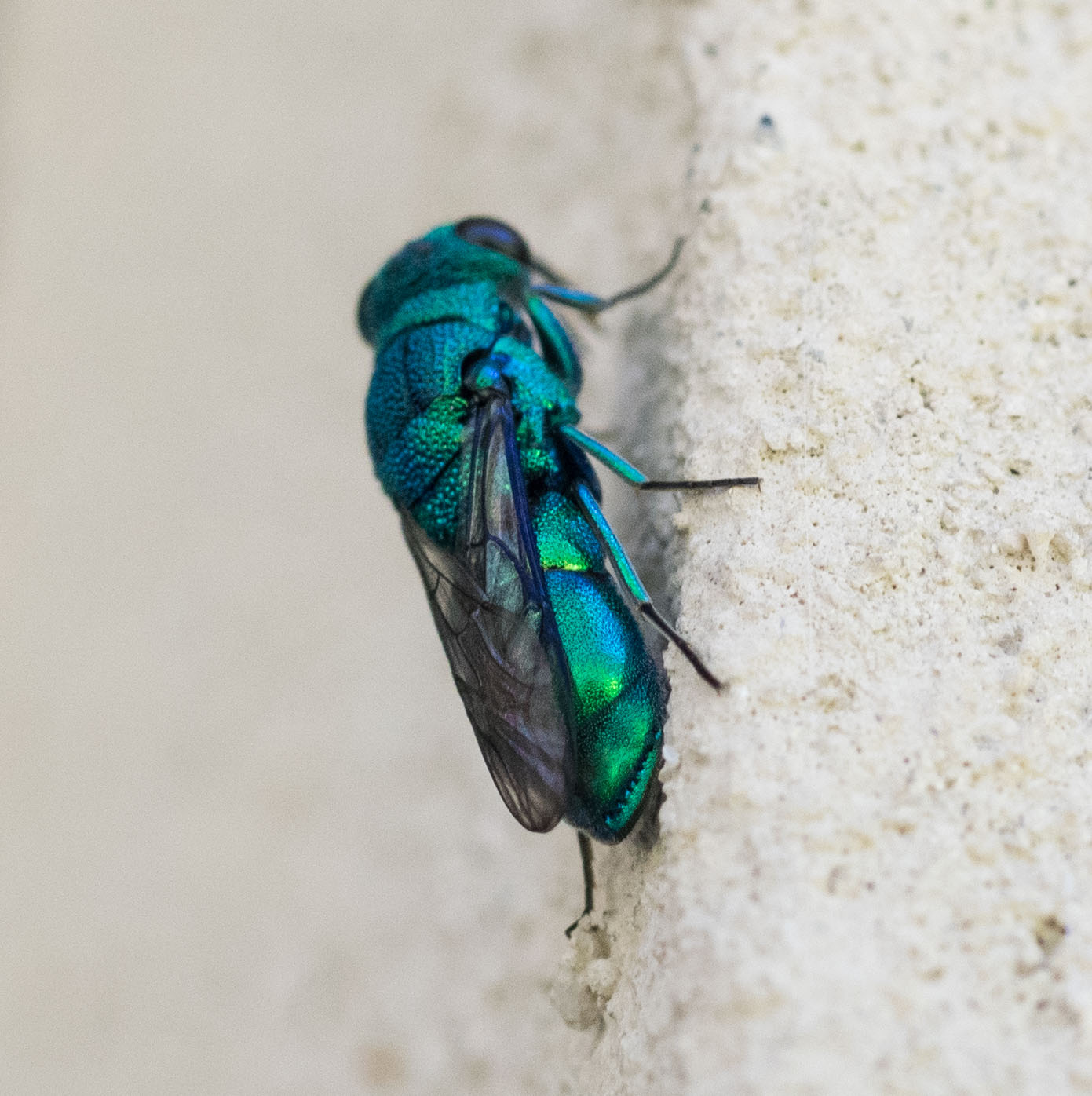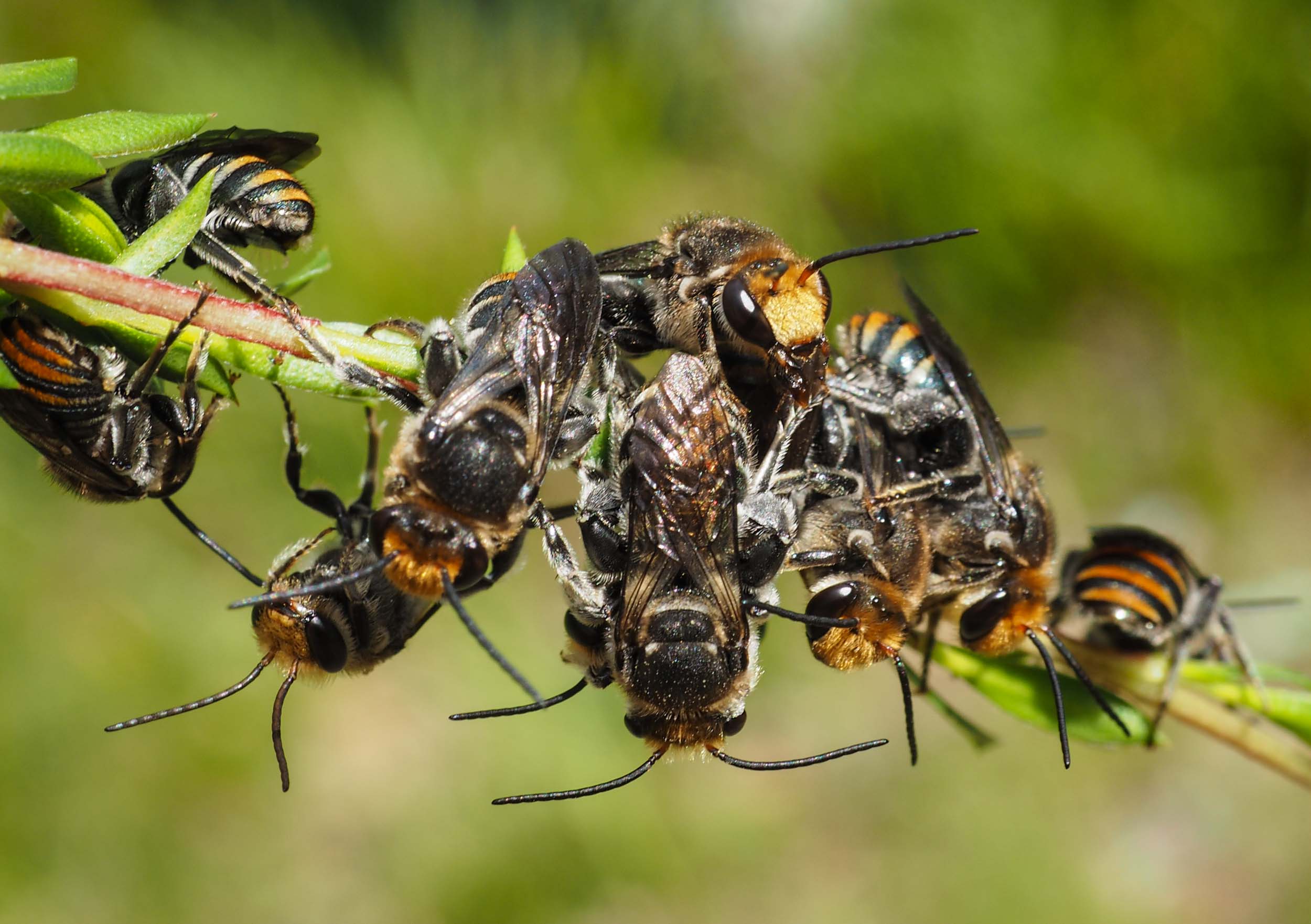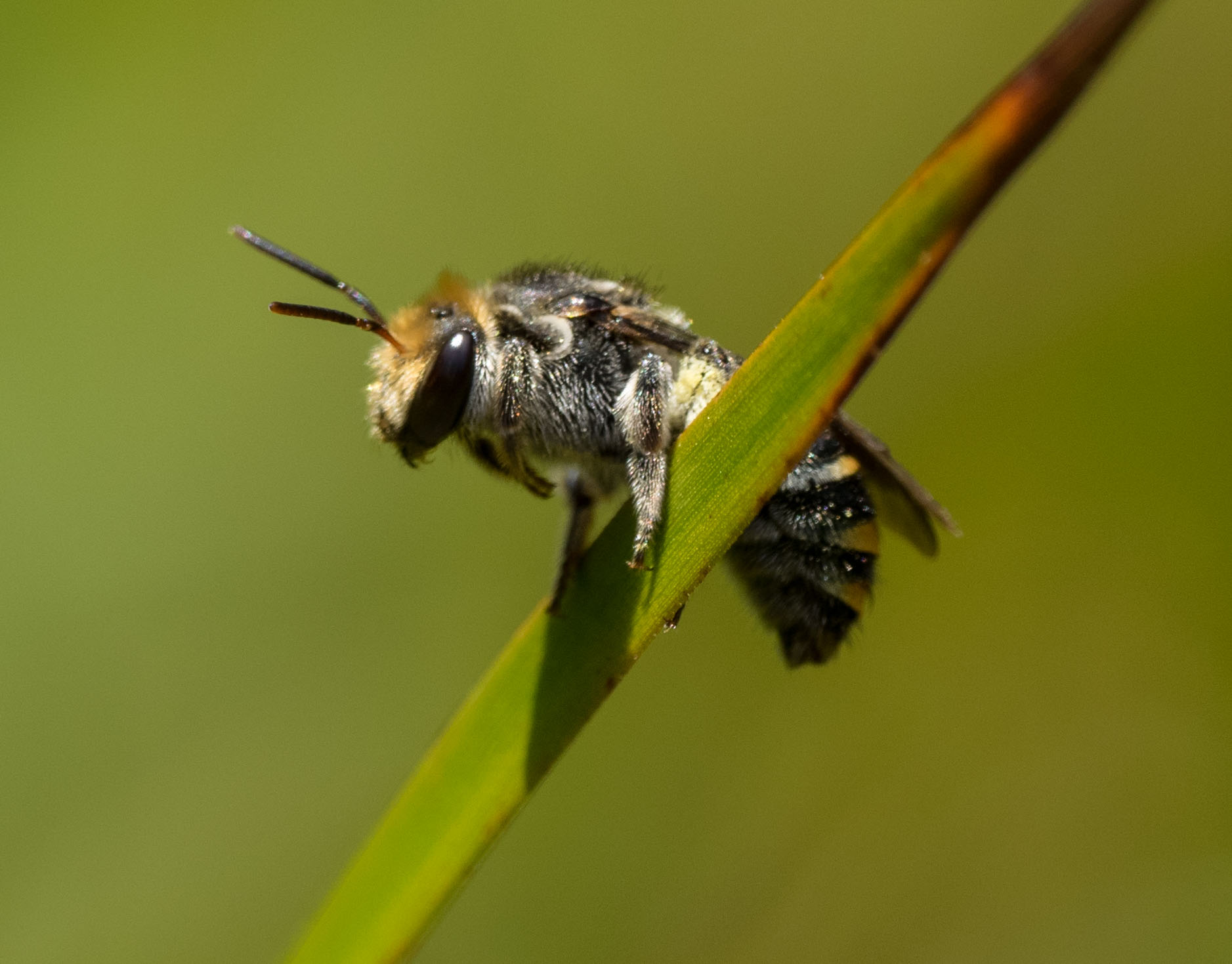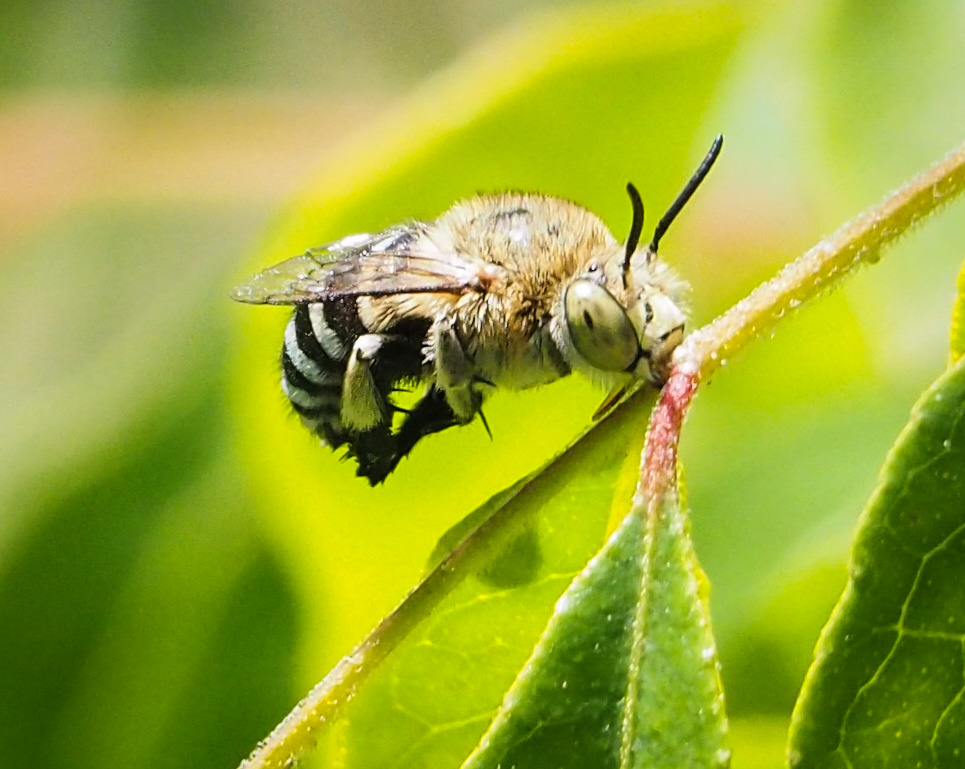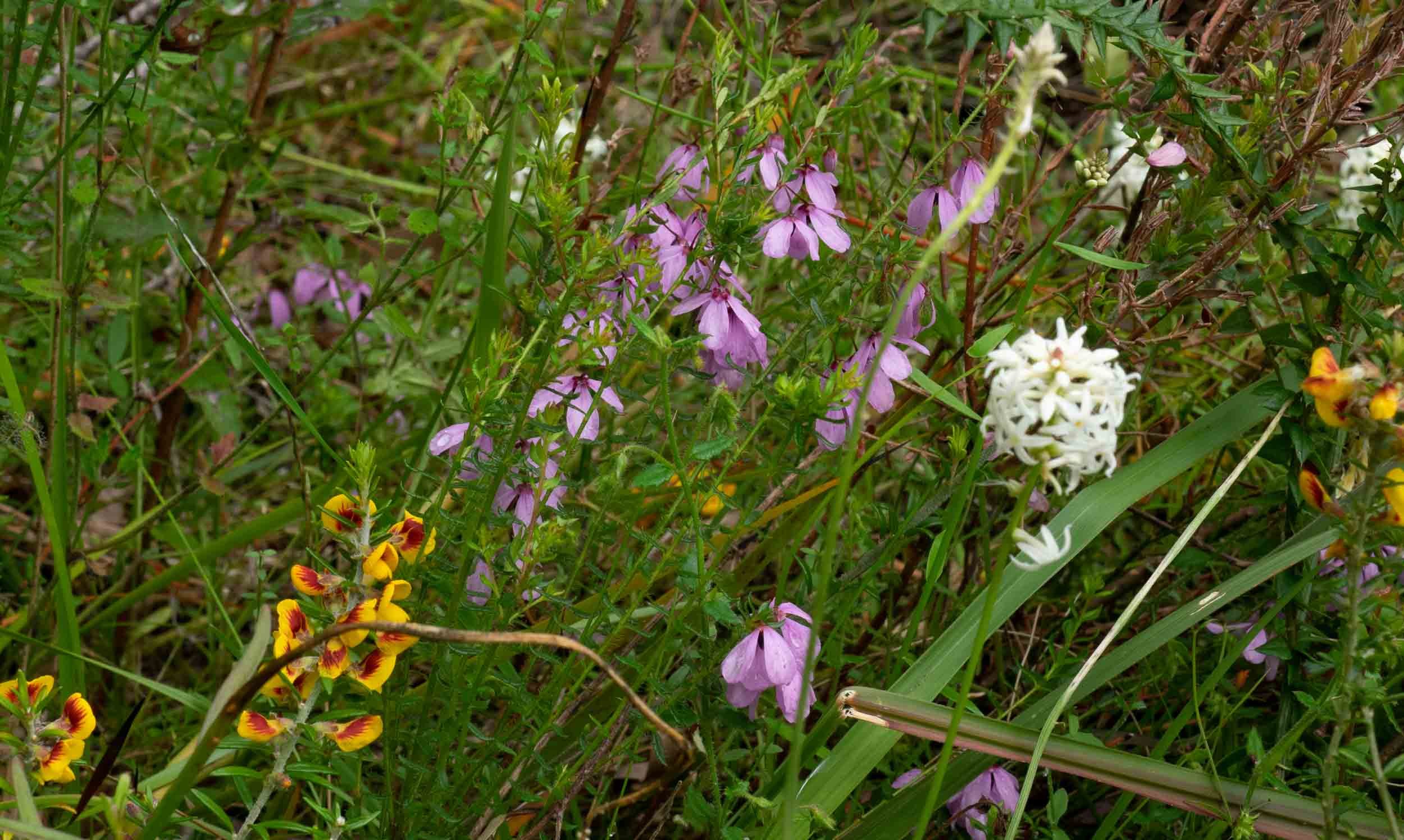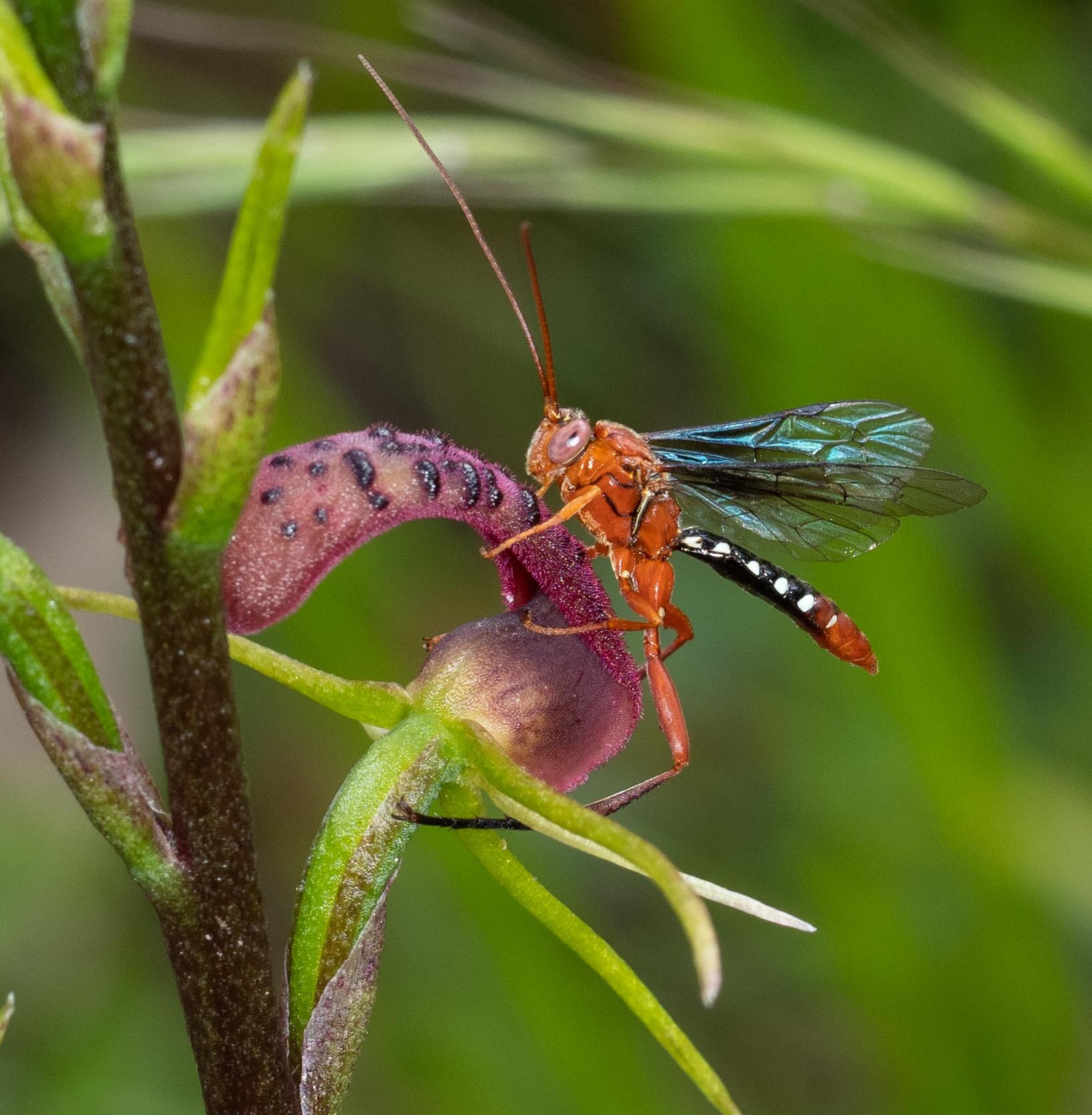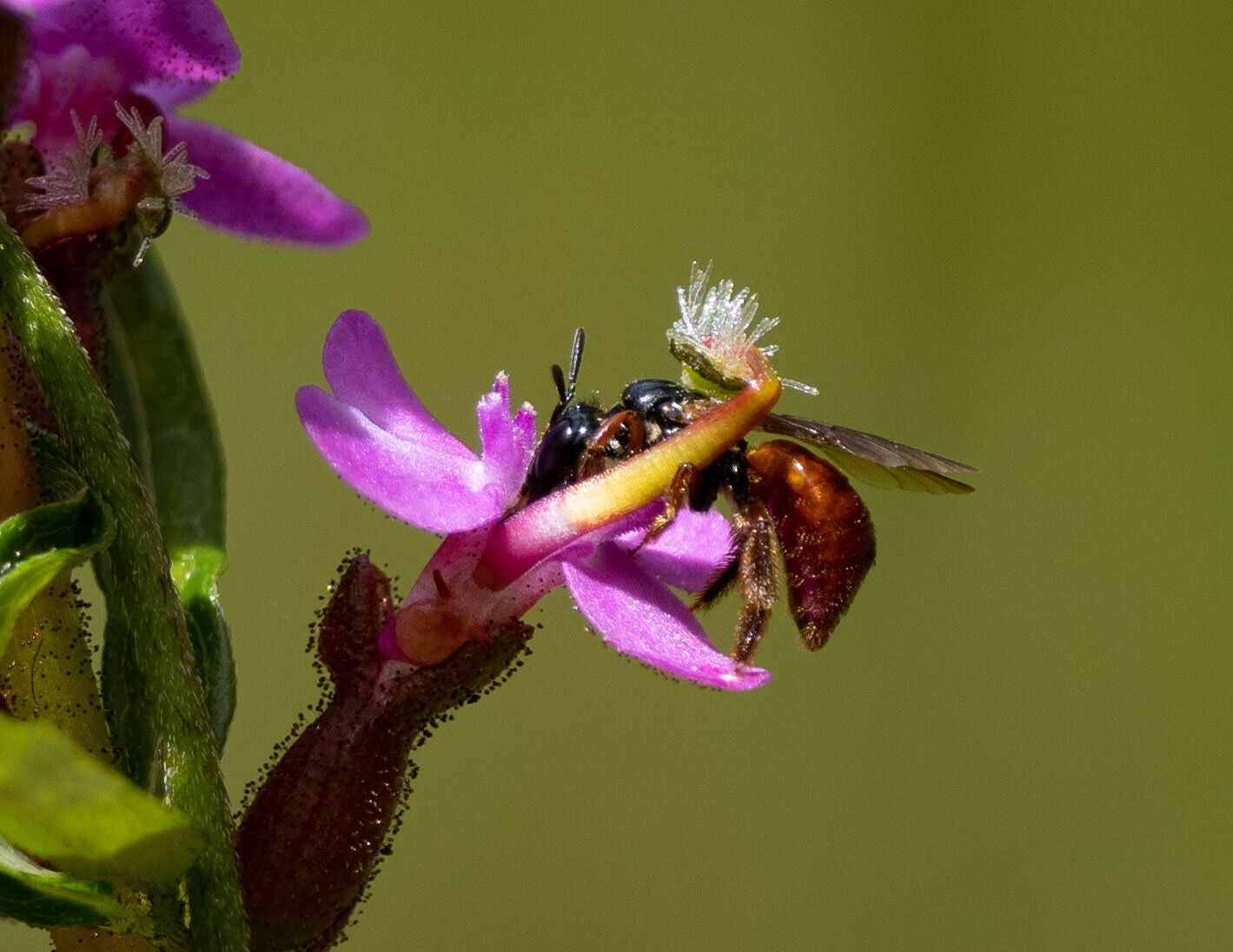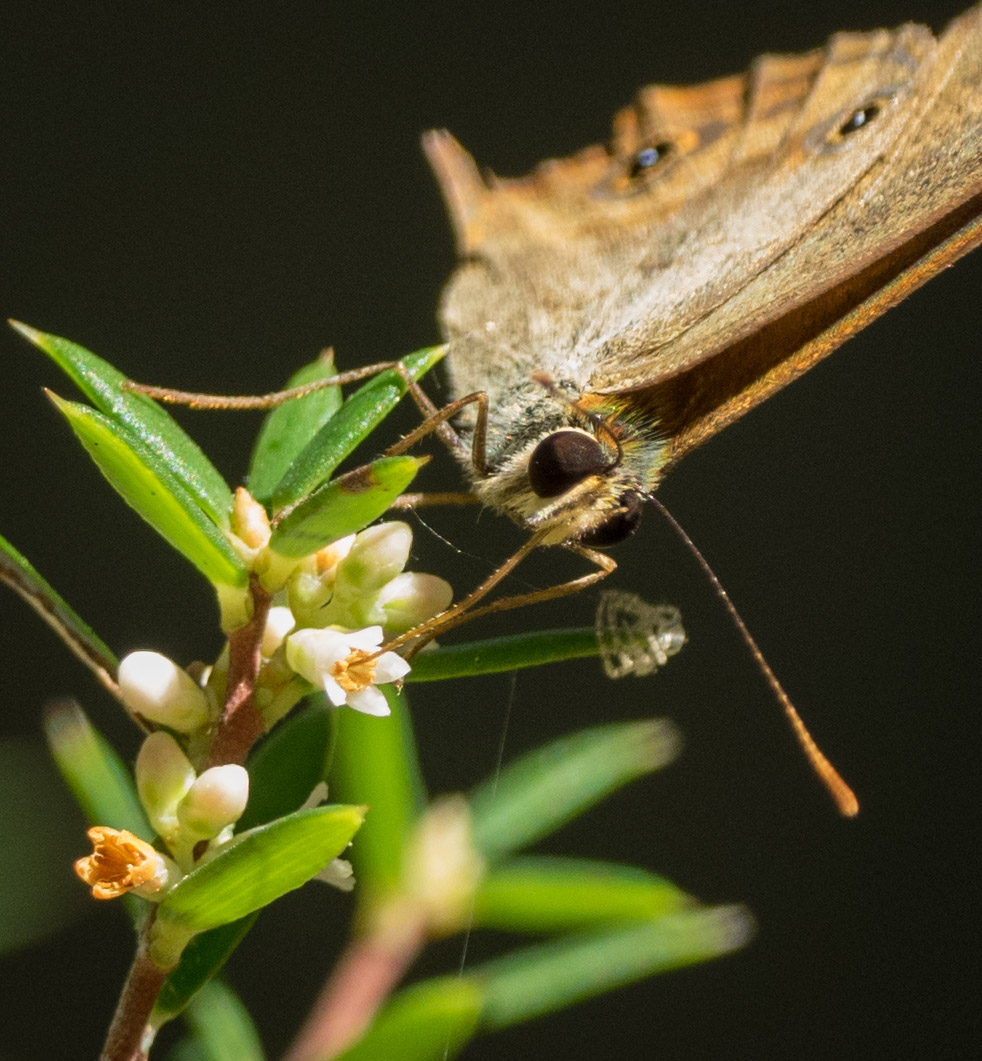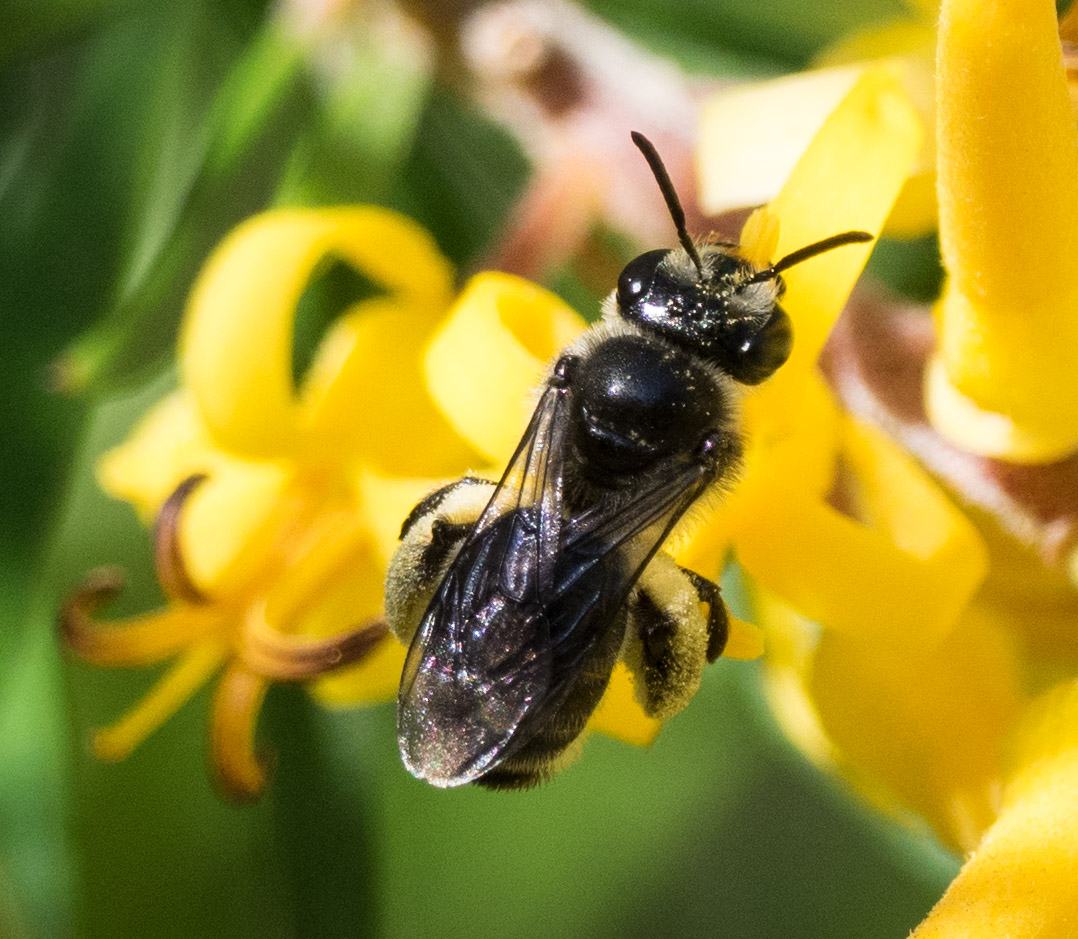Life among the flowers
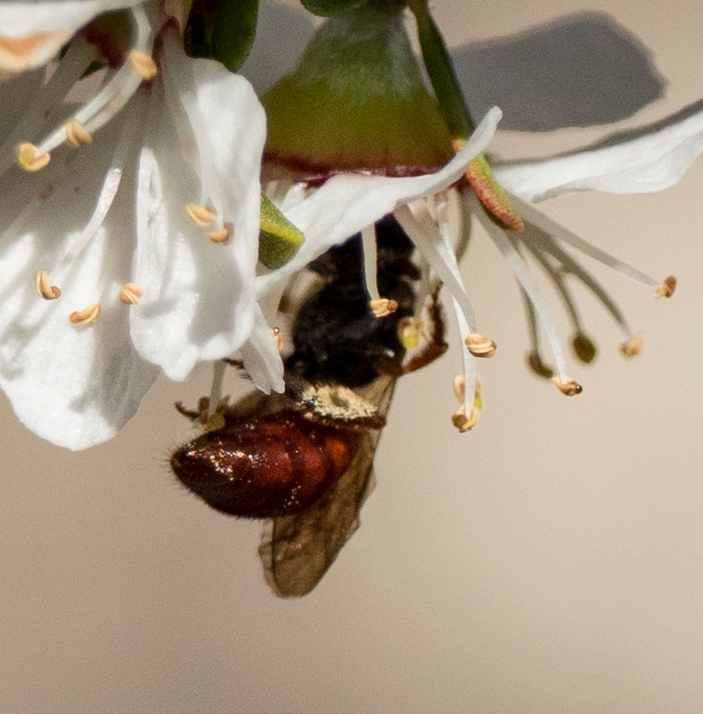
Searching for bees this week has given me a better appreciation of just how full of life flowering plants can be. Nectar provides sugars while pollen is rich in protein. And predators and parasites take advantage of the abundant prey.
This post is simply a photographic tour of this small world.
Hover Fly, Melangyna sp.– DIPTERA (Syrphidae)
Hover Fly, Melangyna sp.– DIPTERA
Hover Fly, Melangyna sp.– DIPTERA
Reed Bee, Exoneura sp. – HYMENOPTERA (Colletidae)
Fly (unidentified) – DIPTERA
Tachinid Fly – DIPTERA (Tachinidae)
Bee Fly, Aleucosia sp. – DIPTERA (Bombyliidae)
Native bee, Lasioglossum sp. – HYMENOPTERA (Halictidae)
Hover Fly, Cyphipelta sp. – DIPTERA (Syrphidae)
Hover Fly, Cyphipelta sp. – DIPTERA
Hover Fly, Cyphipelta sp. – DIPTERA
Looper caterpillar – LEPIDOPTERA
Looper caterpillar – LEPIDOPTERA
Assassin Bug – HEMIPTERA
Assassin Bug – HEMIPTERA
Honey Bee, Apis mellifera – HYMENOPTERA (Apidae)
Huntsman with Honey Bee
Huntsman with Honey Bee
Potter Wasp, Paralastor sp. – HYMENOPTERA (Vespidae)
Potter Wasp – HYMENOPTERA (Vespidae)
Jewel Beetle, Stigmodera – COLEOPTERA
Masked Bee – HYMENOPTERA (Colletidae)
Jewel Beetle, Stigmodera – COLEOPTERA

























